By Shamsynar Ani, Senior Physiotherapist, Changi Sports Medicine Centre
Have you ever wondered why your coach makes you stretch before and after training? Do the stretches help you at all in terms of improving your performance? Can you skip them without any adverse effects? Read on and decide for yourself!
What happens to the muscle when you stretch?
Muscles are made of very small units called sacromeres that resemble two combs facing each other. The "teeth" of these combs slide in and out of each other during exercise. In adolescents, bones grow much faster than muscles, thus leading to "tight" muscles. When you stretch, you allow the sacromere units to lengthen both ways and therefore "catch up" with bone growth. Another postulated effect of stretching is that you create a negative pressure in the blood vessels as you stretch. When you release the stretch, the pressure gradient forces blood to flow into the stretched muscle.
What are the benefits of stretching?
The increase in blood supply to the muscles and the increase in muscle length are believed to give muscles an advantage in their length-tension relationship, thus preventing injuries from occurring. There is however conflicting evidence. Some studies show that the effects of static stretching generally do not last more than an hour, making it insufficient for any sports activity.
Another proposed benefit is that the change in length of muscle during stretching causes the body to relax, which may then help to improve your performance. Again, there is some evidence that the proposed relaxation may actually impair performance as the body is not "fired up" for the specific activity.
How long should I hold a stretch?
There is no strong evidence as to how long a stretch should be held but the general consensus is that the longer the better. It's like pulling a rubber band between two points. The longer you pull, the longer the rubber band becomes. Similarly, when you hold a stretch, you allow the sacromere units to creep slowly and thus allow the muscles to get longer. There is some evidence that shows you need to hold the stretch for a minimum of 20 seconds for 3 to 5 times for this creep effect to occur.
Can stretching be harmful to me?
Yes! Stretching can be harmful if you do it on acutely injured tissue or if it’s done too quickly and without control. Some studies suggest that stretching should not be done just before sports that involve sprinting, jumping and quick changes in direction e.g. soccer, basketball, 100 metres sprint. Just like an overstretched rubber band, the muscle would not be able to store the potential energy and you would not be able to release the necessary force required for the sports.
So what is the best recommendation?
"Warm up should be any exercise routine completed to minimise injury and enhance exercise performance by increasing muscle and core temperature and neuromuscular function" (Young & Behm 2002)
There is growing evidence that static stretching should be taken out of warm-up. So what should you do? Well, it really depends on the sport! For a warm-up to be effective, it should have the following effects:
- Your heart rate should rise to no more than 50% of your maximum heart rate e.g. if you're 15 and you do triathlons, a good warm-up can be a gentle swim/run that does not go past 102 heart beats per min (50% of 220 minus 15).
- Make you sweat perspire slightly (in tropical Singapore), but not enough to make you drenched as if in a sauna.
- Encourage joint movements that is needed for the sports e.g. if you run, you can do buttock kicks (figure 1) or high-knee walks (figure 2).
- Motor drills that are relevant to the sports e.g. if you play soccer, your warm up can include dribbling around cones or dribbling whilst jogging.
- Drills that fine tunes your skills e.g. if you do basketball, burpees may be the right warm up for you.
Just remember: there is no one-size-fits-all for warm ups! Just do whatever your sport needs you to do, but at a slower pace and a smaller range.
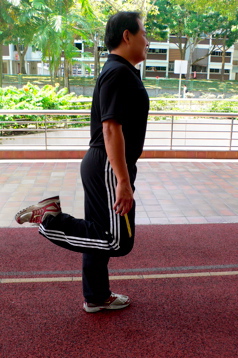
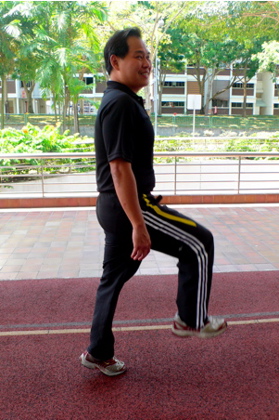
Shamsynar Ani is a Senior Physiotherapist with the Changi Sports Medicine Centre. In her lighter days, she used to play netball for college and run cross-country for school. Her current sports include running after her 4-year-old daughter and squeezing the remaining time to do mini triathlons.

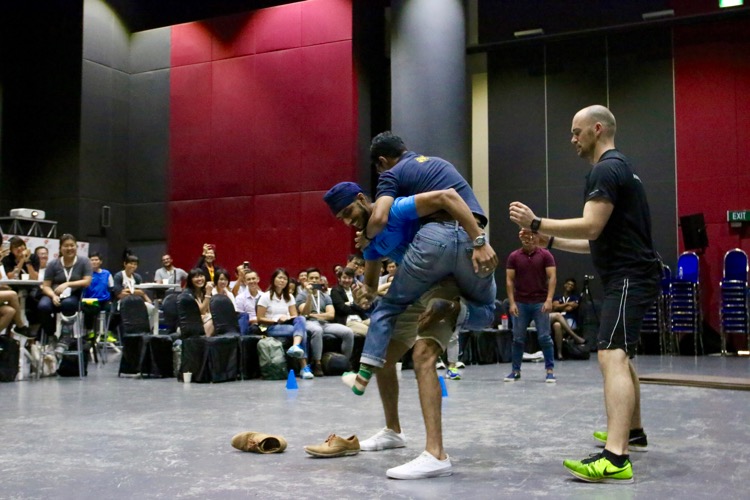

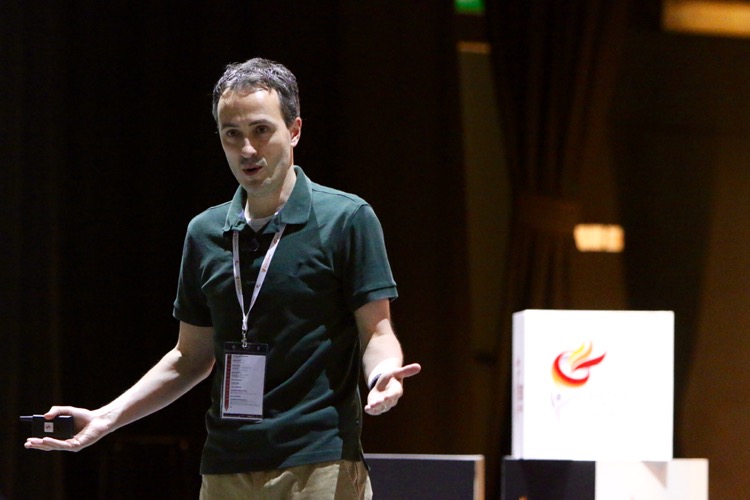
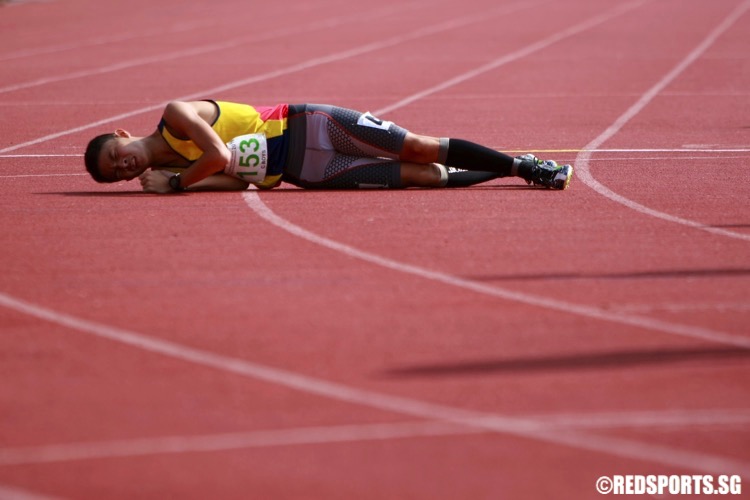
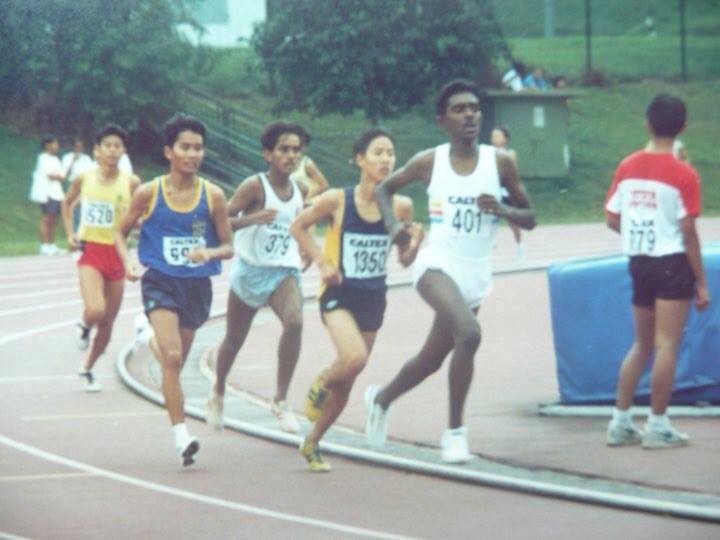
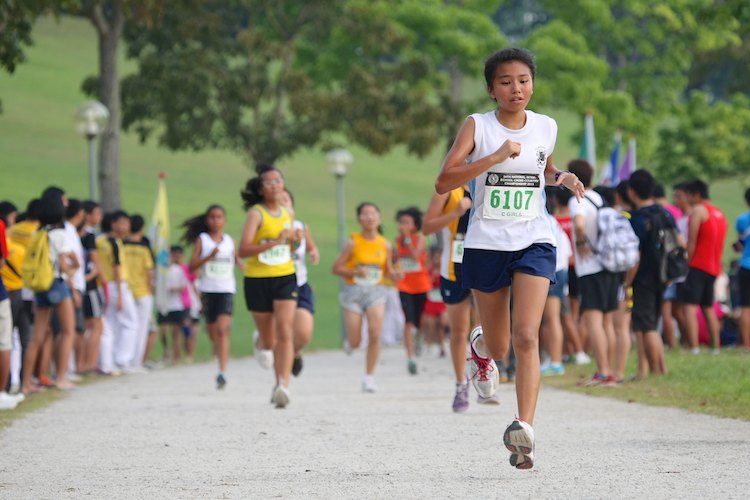
thanx that helped me a lt in my P.E HMWK !!!!
The information presented here is so ambiguous and conflicting. So do we stretch, or do we not stretch? How do we know when to stretch or not stretch? I’m pretty sure seasoned, experienced sportsmen who visit this website will agree that stretching with warm up helps relieve pain from chronic injuries and improves performance and flexibility before training. Stretching before any sport is very important!
what about voleyball. do we stretch before we play it?
so do we sketch before we play basketball ?
Thanks for the information!
But why stretching should not be done just before sports that involve sprinting, jumping and quick changes in direction? I thought stretching before such activities will help to prevent cramps?
Anyway, does PNF (proprioceptive neuromuscular facilitation) stretching helps more than a normal stretching that we do ourselves? I don’t know if this this proven but its been said that stretching promotes flexibility, yet (too much) flexibility will cause injuries. Is that true?